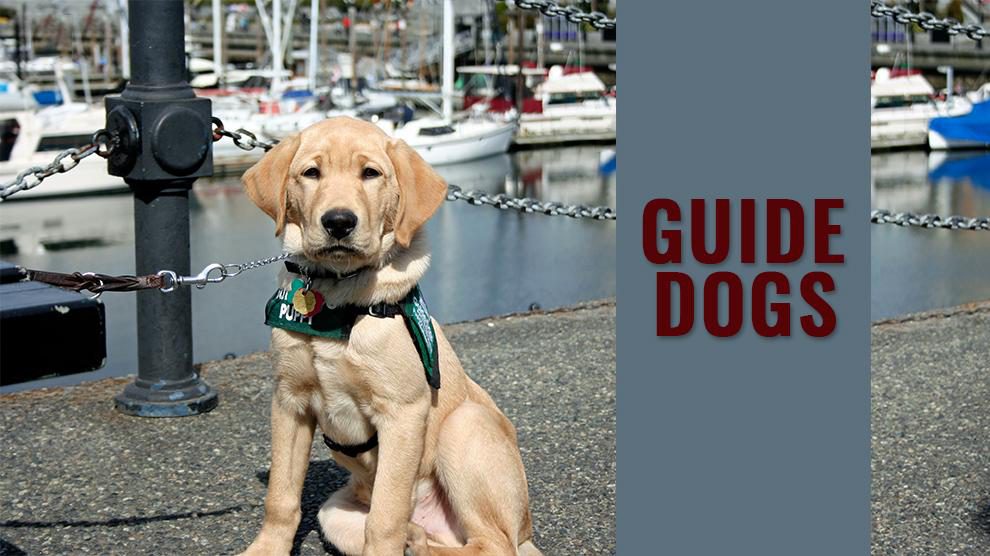Dog Pregnancy Calculator And Timeline
Guide dogs assist or support visually impaired or challenged people by helping them avoid obstacles, negotiate traffic, and stop at steps or steep surfaces. Also called seeing eye dogs, assistance dogs, and service dogs, these dogs are well-trained assistance dogs.
The U-handle and harness expedite a warm bonding between the person and the dog. In this relationship, the human’s part involves providing directional commands. The dog’s part is even more significant.
He should ensure that his or her partner is always safe even if this warrants disobeying his partner.
History Of Guide Dogs
The existence of service animals dates back as far as the early 17th century. As per records, the first service dog training center or school were created in Germany after the First World War.
They were established to aid the war veterans who lost their eyesight in combat.
An American dog lover, Dorothy Harrison Eustis, furnished a first-hand report about a dog training school in Potsdam. This report created ripples amongst other dog lovers and hence these dogs became popular with the masses.
The first assistance dogs in England were German Shepherds. The Guide Dogs for the Blind Association in the UK was born in 1934 with a Russain trainer, Nikolai Liakhoff.
Guide Dog Facts
Take a look at some of the interesting guide dog facts.
Guide dogs, in various places, including the U.S., these dogs are easily allowed to places the normal public can go.
There are certain unwritten rules in selecting a guide dog name. The handler should ensure that name does not sound similar to a command, For instance, “Sit” and “Kit” can confuse your dog.
Not all dogs pass the strict and difficult guide dog program. In 1928, Frank and his guide dog, buddy successfully demonstrated the purpose of having a guide dog by crossing a busy stretch.
The first guide dog training center in the United States was started by Frank and his partner Dorothy who trained Buddy. Early instances of people using guide dogs can be seen in a 13th-century scroll and in the ruins of Herculaneum.
How to get a guide dog or apply to GDB (Guide Dogs for the Blind)?
When a person applies to the GDB, the application process will consider these details:
- The handler’s lifestyle
- Desires
- Goals
Let us take a look at the applying process in getting a guide dog
- Submitting the filled-up application form – An online application is also available.
- Discuss the handler’s travel plans – A phone consultation will follow once the application is submitted.
The association will discuss:- Handler’s health condition
- Travel plans and lifestyle
- Why you want a guide dog?
- How the handler wishes to travel to all the places mentioned in the application
- Additional details including a doctor’s report on the handler’s health condition can be requested.
- A home visit by the association will follow
- Once the approval has been granted, the classes are scheduled
- The class begins and the handler starts an exhilarating journey with their new furry friend for the next decade or so.
Different Guide Dog Breeds
They are selected based on trainability and temperament. Some schools have also included Standard Poodles as a guide dog. Crosses such as Labrador and Golden Retriever mix(Goldador) and Labradoodles (Poodles +Labrador) are also employed as guide dogs.
1. Labrador Retriever
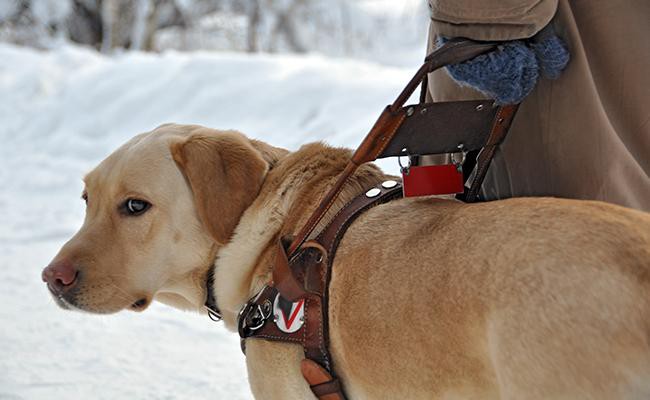
Labrador Retrievers are the most popular and also easily recognizable guide dog. Labs are known for their loyalty and intelligence. Easy to train and reasonably healthy dogs, Labs love working as assistance animals.
2. German Shepherds
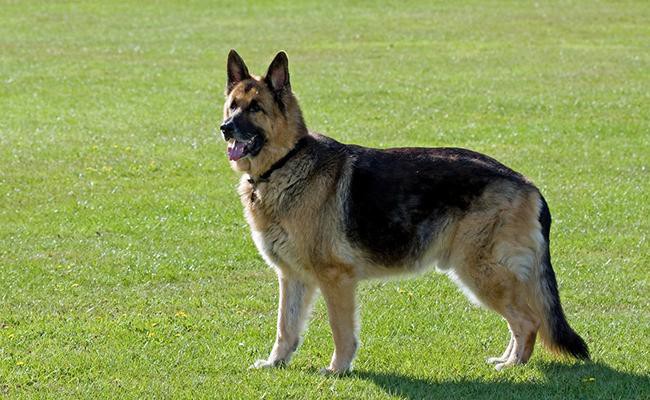
German Shepherds are highly revered for their adaptability and devotion. Good intuition and high intelligence make them highly energetic. These breeds can perform well as guide dogs.
3. Golden Retrievers
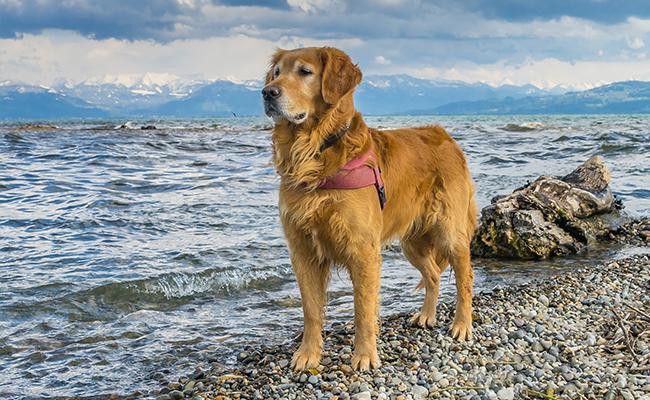
Goldens are friendly and recognizable. These dogs are easy to please and move well along with dogs and cats.
4. Boxers
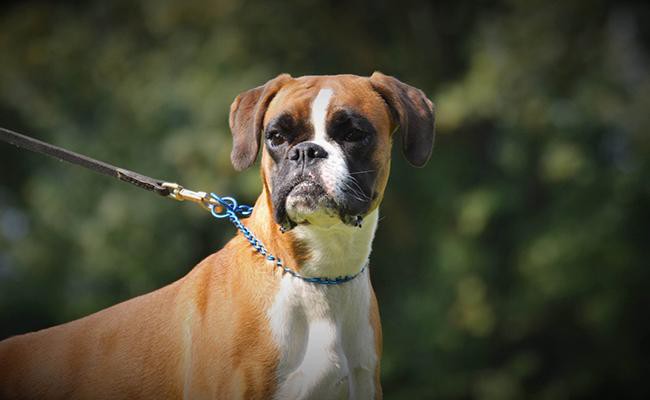
Boxers love to work and are patient too. With consistent training, they can perform well as guide dogs. Grooming is quite simple. Brachycephalic syndrome is a notable concern in this breed.
5. Border Collies
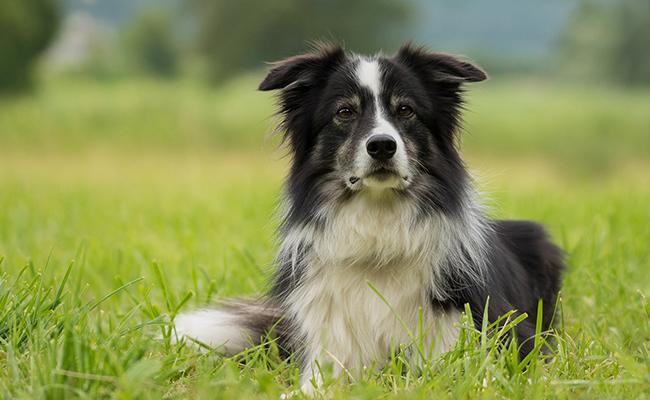
Border Collies are extremely hard working and are always ready to please their owners. It can be hard to train this dog if the trainer is inexperienced. Shedding is quite high in this breed.
6. Standard Poodles
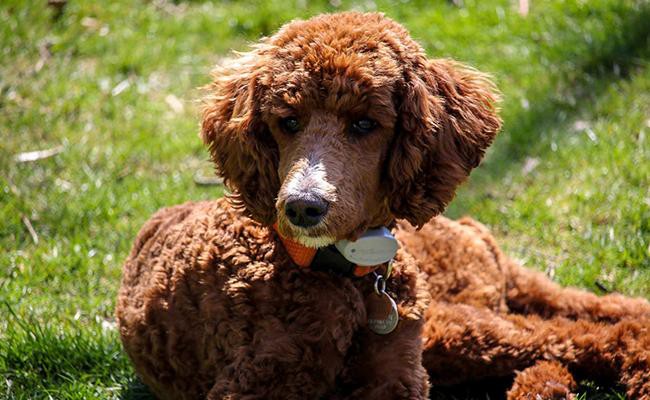
Poodles are highly smart dogs. They learn all the commands as quickly as possible. These dogs appear more friendly than German Shepherds, and people try to pet them wherever they see them.
7. Australian Shepherds
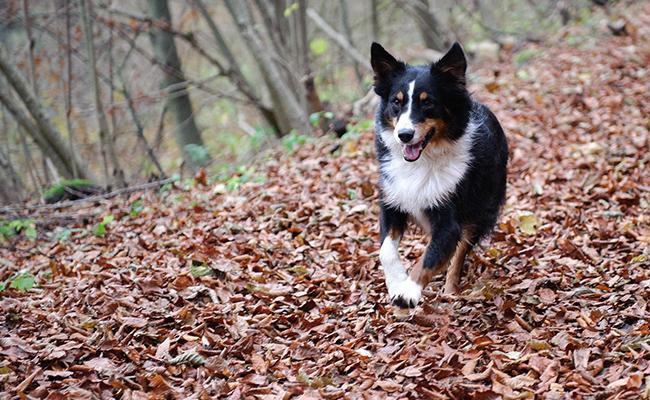
Aussie Shepherds are filled with energy, good-natured, and smart. When provided with the right kind of training, these breeds perform perfectly well as guide dogs.
Eye problem and hip dysplasia is a concern and proper planning can save your dog from serious complications.
8. Chesapeake Bay Retrievers
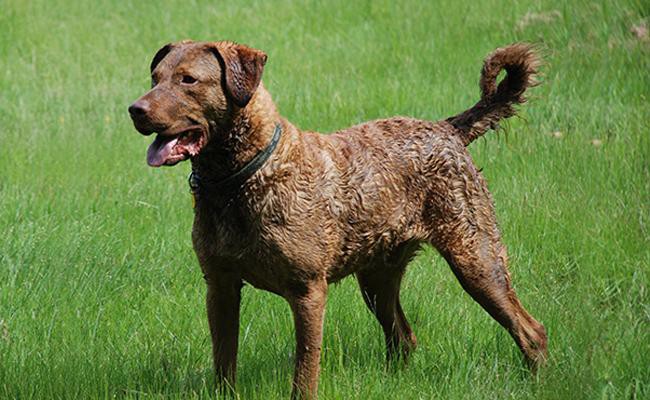
Chesapeake Bay Retrievers make excellent companions. These dogs are highly cooperative and this quality makes them one of the most suited dogs as guides.
9. Vizslas
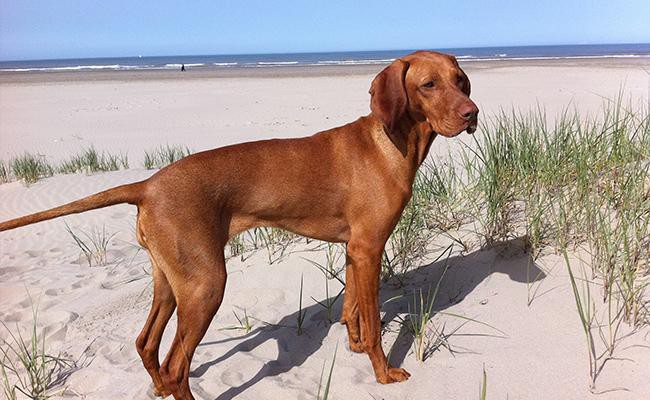
A Vizsla is highly social, obedient, and simple to train. These breeds are eager to work 24/7, and this energy is used to work well as a guide dog. These dogs love to expend their energy well.
Called “Velcro” breed, they always move with their master.
10. Siberian Husky
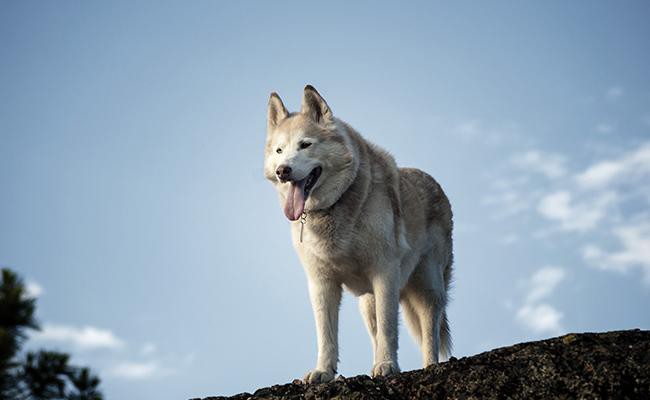
Siberian Huskies are gentle and smart. These cute dogs know how and when to avoid dangerous situations. While these dogs have high energy and can perform well as guide dogs if trained early.
Other Guide Dog Breeds Include
These dog breeds can also work as
- Doberman Pinschers
- Rottweilers
- Airedale Terrier
- American Pit Bull Terriers
Important Things You Probably Missed About Guide Dogs
1. Guide dogs are matched with their partners
Every guide dog is ideally matched with their partner based on their living arrangements, family, activity level, hobbies, and lifestyle. The dogs are handpicked for each and every individual.
2. Bonding holds the key
The pairing will not end there. An excellent dog-handler forms a very strong bond with the dog through hours and hours of training. Handlers and dogs work with each other before moving on with their own assignments.
They will only work for their master’s affection and praise.
3. Popular guide dogs
Lab-Golden crosses, Golden Retrievers, Labrador Retrievers, and German Shepherd Dogs are the most popular guide dogs. Some dog lovers also use Poodles too. They make guide dog dogs for people who suffer from allergies.
They are paired based on the dog’s characteristics, and dog trainer’s pair active breeds with alert, social people.
4. Socializing and training (How are guide dogs trained)?
Socializing and training for guide dogs are one of the most important of all training procedures. It usually begins when these dogs are young. The training continues non-stop throughout their lives.
In this training process, lots and lots of people are involved. Certain guide dog organizations carry out their own dog breeding programs.
As soon as puppies reach 8 weeks of age, they are taken to puppy raisers and these people teach basic obedience and socializing.
These dogs once again return to their parent organization when they are between 12-18 months of age to begin professional training. The dogs are trained even before they are actually paired up with their dog handler.
5. Do you want a guide dog or a GPS?
They are not trained to read signals and they are not a GPS. They undertake cues only from the dog handler. They will also disobey commands if they are faced with an unfamiliar situation.
Seeing Eye Dogs task is to check out for obstacles and hazards that the visually challenged person cannot detect. It can include any overhead obstruction and blocked the path.
The dog handler should listen and understand the traffic movement and then give the guide dog a command.
The dog then decides if it is really safe to take the walk across the busy road. Trust wins trust and guides dogs perform well when they are implicitly trusted.
6. Never pet a guide dog when they are wearing the harness
Once when they are wearing the harness, these dogs are working. They may appear adorable and friendly, but remember they are guiding their handler.
7. Provides a lot of independence
Having a trustworthy and loyal canine can provide mobility and independence that walking canes can’t. A guide dog brings much more spontaneity and personal warmth to the relationship which a cane can’t provide.
How Much Does A Guide Dog Cost?
The total cost can run between $40,000-$60,000 USD.
Fee structure
- Guide Dogs of America – $48,000 USD
- Guiding Eyes for the Blind – $50,000 USD
- Desert Guide Dogs – $40,000 USD
- Fidelco Guide Dog Foundation – $ 45,000 USD
- Guide Dogs Foundation – $50,000 USD
Initial cost involves
- Breeding
- Raising
- Follow up services
- Room and stay during training
- Transportation from and to the school
- Equipment
- Guidance to the guide dog team and guide dog user
- Guide dog training cost
The ongoing cost of a guide dog
A list of maintenance cost include:
- Heartworm medication
- Flea/Tick Medication
- Grooming costs
- Brushes, harnesses, collars
- Interactive dog toys
- Licensing cost if any
- Vaccinations
The final cost of owning a guide dog
- Initial cost – $50,000
- Recurring expense – $1200 per annum
- Working period – 8 years
Final cost – $59,600 (without no major medical expense and retirement cost)
Guide Dogs - FAQs
What guide dogs for the blind actually do?
They provide assistance to visually impaired and blind people by helping them cross steps, curbs, and obstacles.
These dogs also help them negotiate traffic. The U-shaped handle and the harness increase communication between the blind partner and dog.
How long should you wait to get a guide dog?
They are basically exposed to different busy environments including malls and busy marketplace.
This is when these dogs receive basic simple training. These dogs then visit their center and complete the formal training in about 6 months or so.
They do well when they start formal training at 14 months of age.
What is the cost of owning a guide dog in the UK?
The total cost of owning a guide dog in England could come anywhere between £40,000 and £55,000.
How do guide dogs know when to cross the road?
The dog handler understands or absorbs the traffic. He then instructs the dog to move “forward.” The guide dogs are trained not to budge an inch if they perceive any danger in their path.
These dogs are trained to move and turn depending on their handler’s request. They should show some intelligence when it comes across any obstacle.
What is the ideal retirement age of a guide dog?
Guide dogs generally retire when they reach anywhere between 9 and 11 years. Some families prefer to keep them as a pet but it is not possible in all cases.
Dog trainers will now decide where to send these senior dogs after retirement.
List some of the most popular Seeing Eye dogs.
Some of the popular “Seeing eye dogs” include:
- German Shepherds
- Labradors
- Golden Retrievers
- Australian Shepherd
- Border Collies
- Standard Poodles
- Collies
Do guide dogs understand that their handlers are actually blind?
No, guide dogs are not aware of their handler’s condition. These dogs, however, know that sounds can actually aid them to communicate.
Seeing Eye dogs were seen licking their chops compared to dogs of normal healthy owners.
What side guide dogs are trained to walk?
Most guide dogs are trained to remain and walk at the left side of a handler. In case of any problem with the handler’s left hand, they can be moved to the right.
Are guide dogs trained to also poop?
Yes, male guide dogs do not lift their leg when attending nature’s call. They use the “lean forward” pose females use.
The handler can just lean down and clear the poop using a bag of his choice.
Can I touch a guide dog?
No, they can get distracted because they are working. Guide dogs of the blind are their handler’s eyes.
Are guide dogs given an exemption?
Registered visually challenged handlers are not penalized for leaving the poop as it is. Most local councils instruct dog handlers to carry a poop bag when moving in the public space.
Can businesses ask whether a dog is a service dog or not?
No, the commercial establishments can only ask:
- Is the handler disabled?
- What tasks the dog can perform?
No business establishment can request or force a handler to furnish details whether his or her dog is a service dog or not.

